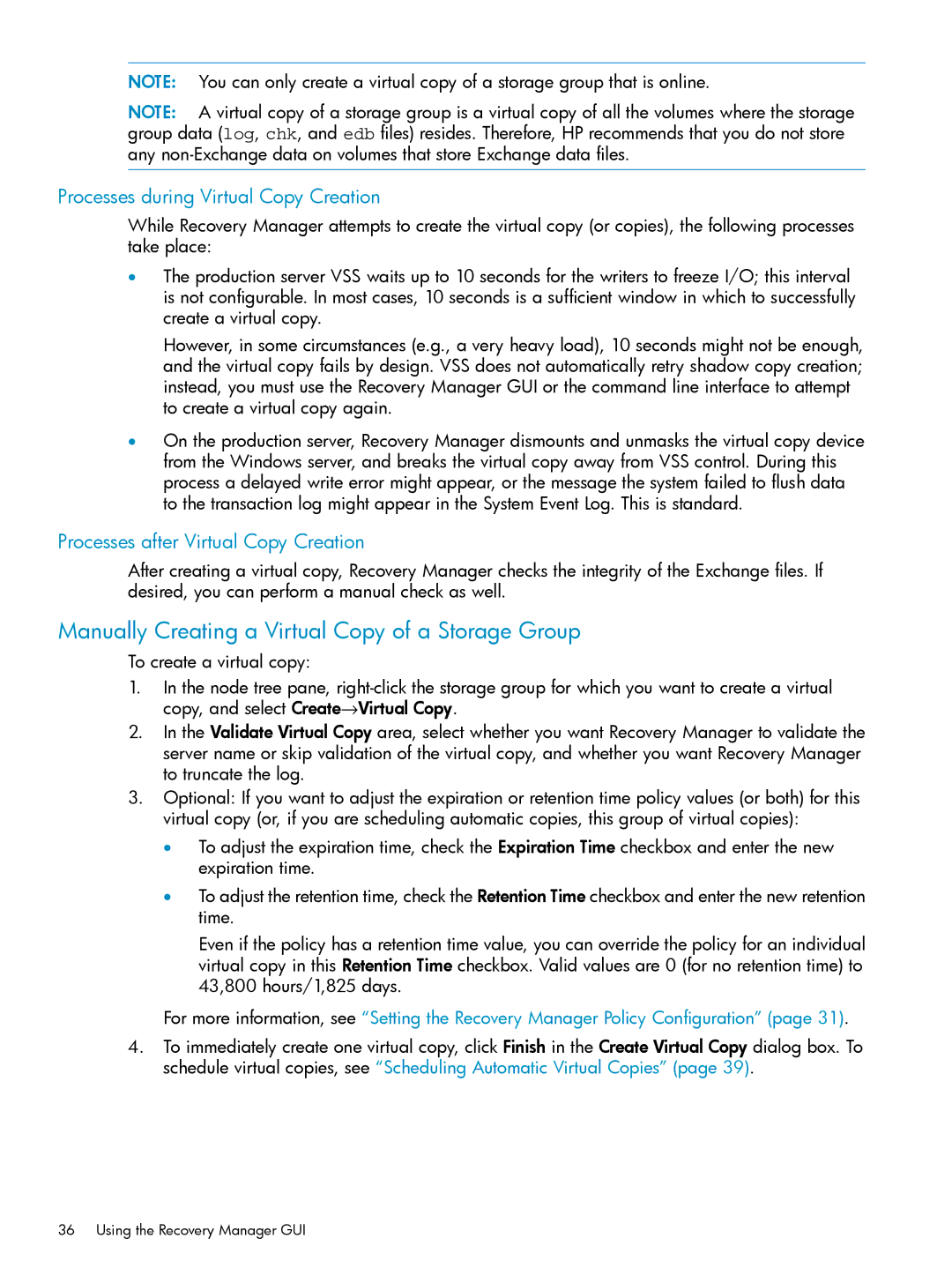
NOTE: You can only create a virtual copy of a storage group that is online.
NOTE: A virtual copy of a storage group is a virtual copy of all the volumes where the storage group data (log, chk, and edb files) resides. Therefore, HP recommends that you do not store any
Processes during Virtual Copy Creation
While Recovery Manager attempts to create the virtual copy (or copies), the following processes take place:
•The production server VSS waits up to 10 seconds for the writers to freeze I/O; this interval is not configurable. In most cases, 10 seconds is a sufficient window in which to successfully create a virtual copy.
However, in some circumstances (e.g., a very heavy load), 10 seconds might not be enough, and the virtual copy fails by design. VSS does not automatically retry shadow copy creation; instead, you must use the Recovery Manager GUI or the command line interface to attempt to create a virtual copy again.
•On the production server, Recovery Manager dismounts and unmasks the virtual copy device from the Windows server, and breaks the virtual copy away from VSS control. During this process a delayed write error might appear, or the message the system failed to flush data to the transaction log might appear in the System Event Log. This is standard.
Processes after Virtual Copy Creation
After creating a virtual copy, Recovery Manager checks the integrity of the Exchange files. If desired, you can perform a manual check as well.
Manually Creating a Virtual Copy of a Storage Group
To create a virtual copy:
1.In the node tree pane,
2.In the Validate Virtual Copy area, select whether you want Recovery Manager to validate the server name or skip validation of the virtual copy, and whether you want Recovery Manager to truncate the log.
3.Optional: If you want to adjust the expiration or retention time policy values (or both) for this virtual copy (or, if you are scheduling automatic copies, this group of virtual copies):
•To adjust the expiration time, check the Expiration Time checkbox and enter the new expiration time.
•To adjust the retention time, check the Retention Time checkbox and enter the new retention time.
Even if the policy has a retention time value, you can override the policy for an individual virtual copy in this Retention Time checkbox. Valid values are 0 (for no retention time) to 43,800 hours/1,825 days.
For more information, see “Setting the Recovery Manager Policy Configuration” (page 31).
4.To immediately create one virtual copy, click Finish in the Create Virtual Copy dialog box. To schedule virtual copies, see “Scheduling Automatic Virtual Copies” (page 39).
36 Using the Recovery Manager GUI
